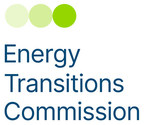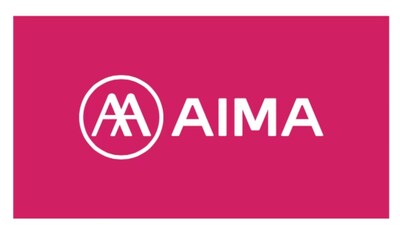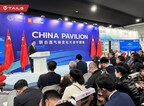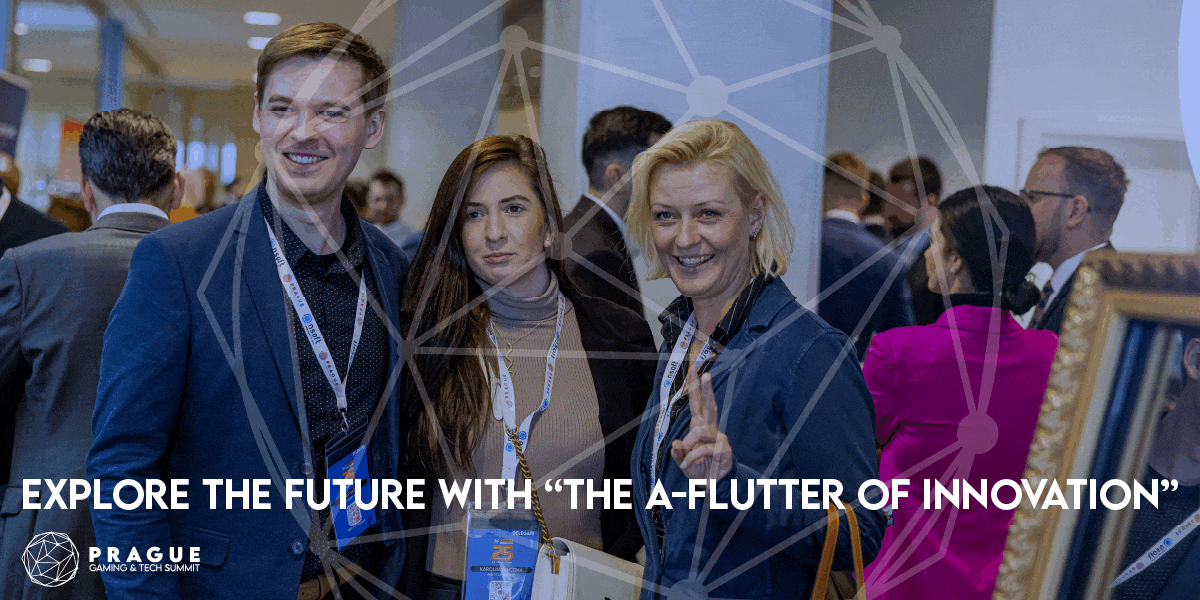Fintech PR
Unleashing climate finance flows at COP29 – the role of the NCQG and NDCs

The latest publication from the Energy Transitions Commission (ETC): “NDCs, NCQG, and Financing the Transition”
LONDON, Oct. 24, 2024 /PRNewswire/ — “Climate finance” will be a key subject at COP29, with debate in particular on the proposed “New Collective Quantified Goal” (NCQG) for financial flows from high-income to low-income countries. But the term “climate finance” is often used vaguely and broadly, covering several different challenges and priorities.
The Energy Transitions Commission’s (ETC) latest publication “NDCs, NCQG, and Financing the Transition” therefore clarifies the nature and scale of different types of finance required, and proposes four principles to ensure a useful conclusion of the NCQG debate. It also explains the vital role that updated National Determined Contributions (NDCs) can and must play in unleashing financial flows.
The NCQG and NDCs
The Paris climate pact included a commitment to agree on the extent to which higher-income countries will financially assist low-income countries with mitigation and adaptation. This NCQG will replace the current $100 billion per annum target for climate finance flows from developed to developing countries which was agreed in 2009 but consistently undelivered until 2022.
The NDCs are the crucial mechanism, established by the Paris Conference, through which countries commit to voluntary national actions to reduce emissions, in line with the global objective of limiting global warming to well below 2°C. Countries are required to submit ratcheted NDCs every five years.
Current NDCs (submitted in 2020) put the world on track to overshoot 2°C warming by 2050 even if implemented. Increasing ambition in the next round of NDC is therefore crucial but achievable because dramatic cost reductions in key technologies (in particular solar PV, wind power and batteries) mean that countries can now rapidly reduce emissions while continuing to meet growing demands for affordable energy access and use.
“COP29 debates on the NCQG need to start with a clear definition of the very different categories of “climate finance” and recognition of the different appropriate funding sources. And however the NCQG debates conclude, countries should use updated and more ambitious NDCs to help unleash the private finance which will play the primary role in funding capital investment for mitigation. But it is also essential for development banks to play an increased and more effective role in supporting financial flows to middle and low-income countries.” – Adair Turner, Chair, Energy Transitions Commission.
“Through frameworks like the NCQG and NDCs, countries can set ambitious goals backed by policies that attract large-scale investments from the private sector and can meet the majority of finance needs for climate mitigation and adaptation. Multilateral Development Banks are crucial to providing affordable finance for decarbonising energy systems and building climate resilience in developing nations while ensuring that economic growth aligns with the clean energy transition.” – Nicholas Stern, Chair, Grantham Research Institute on Climate Change.
“Climate finance” – the need for clarity on categories, quantities, and potential sources
The term “climate finance” is often used without distinguishing the types of finance required which are financed in quite different ways. The ETC’s brief draws a clear distinction between:
- The capital investments needed to establish zero carbon energy systems globally and mitigate climate change. These investments average around $3 trillion annually until 2050.1 Most of this investment will be financed by private institutions delivering an attractive rate of return to investors if appropriate real economy policies are in place. Multilateral development banks (MDBs) and other public financial institutions must also play a significant role to support financial flows to middle and low-income countries.
- Concessional or grant payments may be required to mitigate emissions in specific areas – in particular, to close coal plants early, end deforestation, and finance carbon removals – which may not generate a return on investment. These payments could come from carbon offset markets, philanthropic funds, or inter-governmental contributions. The ETC estimated $300 billion of this type of payment is required annually, but actual flows are unlikely to reach this magnitude, necessitating other measures, such as strong policy, to achieve emission reductions.
- Investments in adaptation – for instance in flood management or coastal protection – to deal with the already inevitable consequences of global warming. The Songwe-Stern 2022 report suggested these might reach $250 billion per annum in middle and low-income countries. A significant part will be financed from domestic resources (especially in middle-income countries) but there is a major essential role for loans provided by MDBs and for concessional payments or grants from high-income countries.
- Payments to help lower-income countries cope with the loss and damage already produced by climate change. The Songwe-Stern report estimated that these costs in middle and low-income countries might reach $200–$400 billion per annum by 2030. At COP27 in 2022, the principle was agreed that higher-income countries should contribute towards meeting these costs.
Optimal results from the NCQG debate at COP29
There are widely divergent views on what the NCQG should cover. Some countries believe that “loss and damage” payments should be included, but others argue that the focus should be on mitigation and adaptation finance. India and some Arab countries have called for a headline figure of over $1 trillion per annum but high-income countries have not yet committed to any figure above $100 billion per annum. Many of those high-income countries believe moreover, that the definition of contributing countries should be expanded to include high per capita emissions countries such as Saudi Arabia, UAE and China.
Given this divergence of opinions going into COP29, there is a risk that no consensus will be reached or that the resulting agreement will use vague language that can be interpreted in many different ways.
The ETC’s focus and expertise relate to the challenge of mitigation and we believe that the NCQG will have the best impact on global mitigation efforts if it includes:
- Clarity on the different types of investment/payment needed, sources that can meet this need (e.g., private finance, MDB loans, or concessional/grant finance), and what is covered by the NCQG headline figure.
- Strong focus on the very large-scale financial flows required to support mitigation in middle and low-income countries (e.g., about $900 billion a year) and the significant role that MDBs must play, including in catalysing private financial flows. Multiple reports have already described what must be done to enable MDBs to play a greater and more effective role.2 Analysis should now be replaced by action.
- Expansion of the definition of contributing countries to include at least China and high-income oil and gas producers such as Saudi Arabia, UAE, and Qatar because of these countries’ high per capita emissions and low cost of capital.
- Strong support for new sources of funds such as:
- Global carbon taxes on aviation and shipping as proposed by the Nairobi Declaration.
- The allocation of revenues from border carbon adjustment mechanisms (CBAMs) to support climate finance flows to low-income countries.
Key priorities for the NDCs
Most capital investment to drive mitigation will be financed by private institutions (or state-owned companies acting in a market-competitive fashion). But governments have a responsibility to incentivise that investment through well-designed policies. Clearer and more ambitious NDCs could also help by providing certainty about future objectives and supporting policy. The ETC recommends that the next round of NDCs should:
- Set more ambitious emission reduction targets to reflect technological progress and cost reductions already made, and align NDC objectives with existing policy commitments.
- Define strong links between targets and supporting policy, acting as comprehensive roadmaps for implementation.
- Contain absolute or equivalent emissions targets for specific sectors and cover all greenhouse gases.
- Identify the investments required to deliver emissions reductions and the broad balance of financing sources envisaged.
Download the briefing note: https://www.energy-transitions.org/publications/ndcs-and-financing-the-transition/
Notes to Editors
1 In our 2023 report Financing the Transition, the ETC estimated that $3.5 trillion per annum is required for climate mitigation investment between now and 2050. This will be offset by an average annual reduction of $0.5 trillion in fossil fuel investment, to give a net figure of $3 trillion per annum.
2 For example, Independent Expert Group (2019), Transforming the Financial System for People and Planet; Blended Finance Taskforce (2021), Better Finance, Better World; European Investment Bank (2022), Joint Report on Multilateral Development Banks’ Climate Finance; OECD (2022), Multilateral Development Finance 2022; International Finance Corporation (2023), Mobilisation of Private Finance by Multilateral Development Banks and Development Finance Institutions.
NDCs, NCQG, and Financing the Transition: Unlocking Flows for a Net-Zero Future builds on previous ETC work including, Financing the Transition and Credible Contributions. It is based on analysis developed in extensive consultation with ETC Members from across industry, financial institutions, and environmental advocacy and constitutes a collective view of the Energy Transitions Commission. However, it should not be taken as members agreeing with every finding or recommendation.
The ETC is a global coalition of leaders from across the energy landscape committed to achieving net-zero emissions by mid-century. For further information on the ETC please visit: https://www.energy-transitions.org
Logo – https://mma.prnewswire.com/media/1935158/Energy_Transitions_Commission_Logo.jpg
![]() View original content:https://www.prnewswire.co.uk/news-releases/unleashing-climate-finance-flows-at-cop29–the-role-of-the-ncqg-and-ndcs-302286076.html
View original content:https://www.prnewswire.co.uk/news-releases/unleashing-climate-finance-flows-at-cop29–the-role-of-the-ncqg-and-ndcs-302286076.html

Fintech PR
China’s AIMA brand electric motorbike is now in Bangladesh

DHAKA, Bangladesh, Nov. 23, 2024 /PRNewswire/ — With the popularity of electric vehicles in Bangladesh, the globally renowned AIMA brand has also arrived in Bangladesh. The esteemed DX Group has brought the AIMA F-626 to customers. This environmentally friendly battery-operated electric motorbike has already been approved by the Bangladesh Road Transport Authority (BRTA) now.
In light of the increasing popularity of electric motorcycles in the country, the internationally-leading brand AIMA has entered the market. By the end of 2023, AIMA electric two-wheelers had established a presence in over 50 countries worldwide, with 11 global production bases, including overseas factories in Indonesia and Vietnam. In 2022, AIMA collaborated with Rob Janoff, the designer of the Apple logo, to refresh the brand’s VI system with a youthful and fashionable image. In 2023, AIMA teamed up with PANTONE, the global authority in color expertise, to create the trending color of the year. As an industry leader, AIMA spearheads the electric two-wheeler sector and showcases the prowess of a leading electric two-wheeler brand on a global scale. As of March 31, 2024, AIMA’s total electric two-wheeler sales had reached 80 million units, earning certification from Frost & Sullivan, a globally recognized business growth consulting firm, as the “Global Leading Electric Two-wheeler Brand”.
Over the years, AIMA has always been a product trendsetter in the electric two-wheeler sector. As of March 31, 2024, the total sales volume of AIMA electric two-wheelers reached 80 million, and Frost & Sullivan, a world-renowned market consulting company, awarded AIMA with the market status certification of the “Global Leading Electric Two-wheeler Brand (by Sales)”.
AIMA adhere to the customer-centered product philosophy and technologies that support long-term innovation and breakthroughs. We believe that the efficiency and modern technology of the AIMA F-626 will present an excellent alternative means of communication for our customers.


Photo – https://mma.prnewswire.com/media/2557788/image.jpg
Photo – https://mma.prnewswire.com/media/2565550/Image2.jpg
Logo – https://mma.prnewswire.com/media/2449955/5026987/AIMA_Technology_Logo.jpg
![]() View original content:https://www.prnewswire.co.uk/news-releases/chinas-aima-brand-electric-motorbike-is-now-in-bangladesh-302314773.html
View original content:https://www.prnewswire.co.uk/news-releases/chinas-aima-brand-electric-motorbike-is-now-in-bangladesh-302314773.html

Fintech PR
China Telecom Gulf Officially Launches in Saudi Arabia for Business

HONG KONG, Nov. 23, 2024 /PRNewswire/ — On November 21, China Telecom Gulf was officially launched in Riyadh. This milestone marks a significant step in China Telecom’s efforts to provide deep services under the “Belt and Road Initiative” and to promote the building of a “China-Arab Community with a Shared Future.” It signifies another solid advancement on China Telecom’s path toward internationalization. Mr. Liu Guiqing, Executive Director and EVP of China Telecom Corporation, delivered an opening speech, along with Mr. Fawaz, Representative of Contact Office of Chinese Companies in the KSA, Deputy General Manager of Industrial and Commercial Bank of China Riyadh Branch. Over 100 guests and leaders from the Economic and Commercial Office of Embassy of the PRC of the KSA, Saudi Telecom Company (STC), Bank of China, Huawei, and others attended to witness this momentous occasion.
In his address, Mr. Liu Guiqing emphasized China Telecom’s commitment to openness, cooperation, and mutual benefit. He expressed the company’s willingness to share its experiences in cloud-network integration, cloud transformation, intelligent operations, and technological innovation. China Telecom aims to work closely with various levels of Saudi governments, enterprises, and partners to actively participate in the development of local digital infrastructure, drive the rapid advancement of next-generation information technologies, and establish a robust bridge for cooperation between China and Saudi Arabia in the field of information technology. Leveraging its extensive resources and global operational capabilities, China Telecom plans to bring its strengths in 5G, cloud computing, artificial intelligence, and other fields to provide innovative, high-quality communication products and services to Saudi enterprises, institutions, and consumers.
Mr. Fawaz extended his warm congratulations on the opening of China Telecom Gulf. He highlighted that as a leading global provider of communication services, China Telecom possesses abundant cloud-network resources and mature international service capabilities. The establishment of China Telecom Gulf is a significant step toward supporting the digital transformation of businesses in the region. He expressed confidence that through joint efforts, the company will seize opportunities in the digital era and contribute to Saudi Arabia’s socio-economic development and practical cooperation between China and Saudi Arabia in various fields.
China Telecom showcased its global resources, business capabilities, and its investments and partnerships in the Middle East and Africa. Key services introduced included eSurfing Cloud, computing power solutions, quantum technology, and customized 5G networks. Currently, China Telecom operates branches in 42 countries and regions worldwide, owns 53 international submarine cables, and manages 27 self-operated Internet Data Centers (IDCs). Its cloud-network integrated infrastructure and customer-centric digital service systems provide coverage across the globe.
During the event, China Telecom Gulf signed strategic cooperation agreements with Saudi Telecom Company (STC), Huawei Saudi Arabia, and Baud Telecom Company. The parties committed to deep collaboration, leveraging their respective strengths to provide optimized and convenient digital experiences to Saudi customers.
The establishment of China Telecom’s presence in Saudi Arabia marks a major milestone in the company’s entry into the Middle Eastern communications market, representing a key development in its global strategy. Moving forward, China Telecom Gulf will leverage China Telecom’s robust digital infrastructure and resource integration capabilities. We will collaborate closely with local Saudi enterprises, Chinese businesses expanding internationally, and global companies to strengthen cooperation and enhance exchanges. The company aims to contribute to the growth of Sino-Saudi and Middle Eastern industrial cooperation, continuously offering more smart solutions for the development of the Middle East’s digital economy, while striving to become a world-class provider of digital and intelligent technology services.
Photo – https://mma.prnewswire.com/media/2566044/image_5024765_40051959.jpg
![]() View original content:https://www.prnewswire.co.uk/news-releases/china-telecom-gulf-officially-launches-in-saudi-arabia-for-business-302314765.html
View original content:https://www.prnewswire.co.uk/news-releases/china-telecom-gulf-officially-launches-in-saudi-arabia-for-business-302314765.html

Fintech PR
Redefining Financial Frontiers: Nucleus Software Celebrates 30 Years with Synapse 2024 in Singapore

SINGAPORE, Nov. 23, 2024 /PRNewswire/ — The thriving India–Singapore partnership in banking and technology reached a new milestone as Nucleus Software celebrated 30 years of transformative innovation at Synapse 2024, held in Singapore. The event underscored the company’s role in redefining financial services across Southeast Asia (SEA) and the globe, bringing together leaders in finance and technology to explore a shared vision for the future of banking.
Synapse 2024 celebrated 30 years of Nucleus Software’s leadership in driving transformative change across Singapore and Southeast Asia’s financial ecosystem. The event also shone a spotlight on the Global Finance & Technology Network (GFTN), an initiative supported by the Monetary Authority of Singapore (MAS) to champion responsible technology adoption. The event highlighted the deepening synergies between India and Singapore, driven by their shared commitment to innovation, cross-border collaboration, and financial inclusion. As the financial services sector undergoes rapid evolution with advancements in artificial intelligence, blockchain, and digital banking, these partnerships are setting the stage for a more connected, resilient, and inclusive global ecosystem.
Vishnu R. Dusad, Co-founder and Managing Director of Nucleus Software, reflected on the milestone: “For over 30 years, we’ve had the privilege of aligning our journey with Singapore’s ascent as a global financial powerhouse. Back in 1994, when we chose to go East instead of West, it was a bold and emotional decision—guided by our belief in Singapore as a hub for innovation and collaboration. We saw then what remains true today: Singapore is at the heart of the global financial landscape, a place where new ideas take root, and partnerships thrive.”
The event brought together a distinguished array of participants, highlighting the transformative potential of India–Singapore collaboration. Mr. Piyush Gupta, CEO of DBS Group and the Guest of Honor, set the tone for the event with his opening remarks, emphasizing the transformative role of big tech in reimagining scalable, customer-centric financial services in the digital age.
Following his address, key speakers enriched the discussions with their insights. Mr. Sopnendu Mohanty, Chief Fintech Officer at the Monetary Authority of Singapore and Group CEO-Designate of The Global Finance & Technology Network (GFTN), underlined the importance of fostering responsible technology adoption and building inclusive financial ecosystems. Mr. Vinod Rai, globally respected public policy expert, Distinguished Visiting Research Fellow at the National University of Singapore, and former Comptroller and Auditor General of India, shared his perspectives on governance and policy frameworks in financial systems. Mr. S.M. Acharya, Chairman of Nucleus Software and former Defence Secretary of India, offered a visionary outlook on leveraging technology to modernize and secure banking frameworks. Finally, Mr. Pieter Franken, Co-founder and Director of GFTN (Japan), a global FinTech pioneer and deep tech innovator, discussed the future of decentralized finance and its implications for the financial sector.
The event showcased the transformative role of technology in global financial systems, emphasizing innovations that set benchmarks for scalability and inclusivity. Panelists discussed the importance of localized solutions, the challenges of cross-border integration, and leveraging dual business models to optimize capital and foster public participation. The dialogue highlighted the need for common standards, unified frameworks like APIs, and collaborative efforts to accelerate financial inclusion and drive global connectivity in the digital age.
For 30 years, Nucleus Software has consistently introduced advanced lending and banking solutions that support financial institutions’ evolving needs in Singapore and South East Asia. Driven by lean development methodologies like Acceptance Test-Driven Development (ATDD) and Continuous Integration/Continuous Delivery (CICD), Nucleus Software continues to push boundaries in efficient, flexible, and secure financial technology.
Photo: https://mma.prnewswire.com/media/2565374/Synapse_2024.jpg
Logo: https://mma.prnewswire.com/media/2565373/Nucleus_Software_Logo.jpg
![]() View original content to download multimedia:https://www.prnewswire.co.uk/news-releases/redefining-financial-frontiers-nucleus-software-celebrates-30-years-with-synapse-2024-in-singapore-302314485.html
View original content to download multimedia:https://www.prnewswire.co.uk/news-releases/redefining-financial-frontiers-nucleus-software-celebrates-30-years-with-synapse-2024-in-singapore-302314485.html

-

 Fintech3 days ago
Fintech3 days agoFintech Pulse: Industry Updates, Innovations, and Strategic Moves
-

 Fintech2 days ago
Fintech2 days agoFintech Pulse: Daily Industry Brief – A Dive into Today’s Emerging Trends and Innovations
-

 Fintech PR3 days ago
Fintech PR3 days agoROLLER Releases 2025 Attractions Industry Benchmark Report, Unveiling Key Trends and Revenue Strategies
-

 Fintech PR3 days ago
Fintech PR3 days agoTAILG Represents the Industry at COP29, Advancing South-South Cooperation with Low-Carbon Solutions
-

 Fintech5 days ago
Fintech5 days agoFintech Pulse: Navigating Expansion, Innovation, and Sustainability
-

 Fintech4 days ago
Fintech4 days agoFintech Pulse: Milestones, Partnerships, and Transformations in Fintech
-

 Fintech PR2 days ago
Fintech PR2 days agoCritical Metals Surge Opens Prime Opportunity for Mining Investors
-

 Fintech PR3 days ago
Fintech PR3 days agoThe CfC St. Moritz Announces New Speakers from BlackRock, Binance, Bpifrance, Temasek, PayPal, and More for Upcoming 2025 Conference





